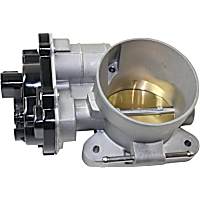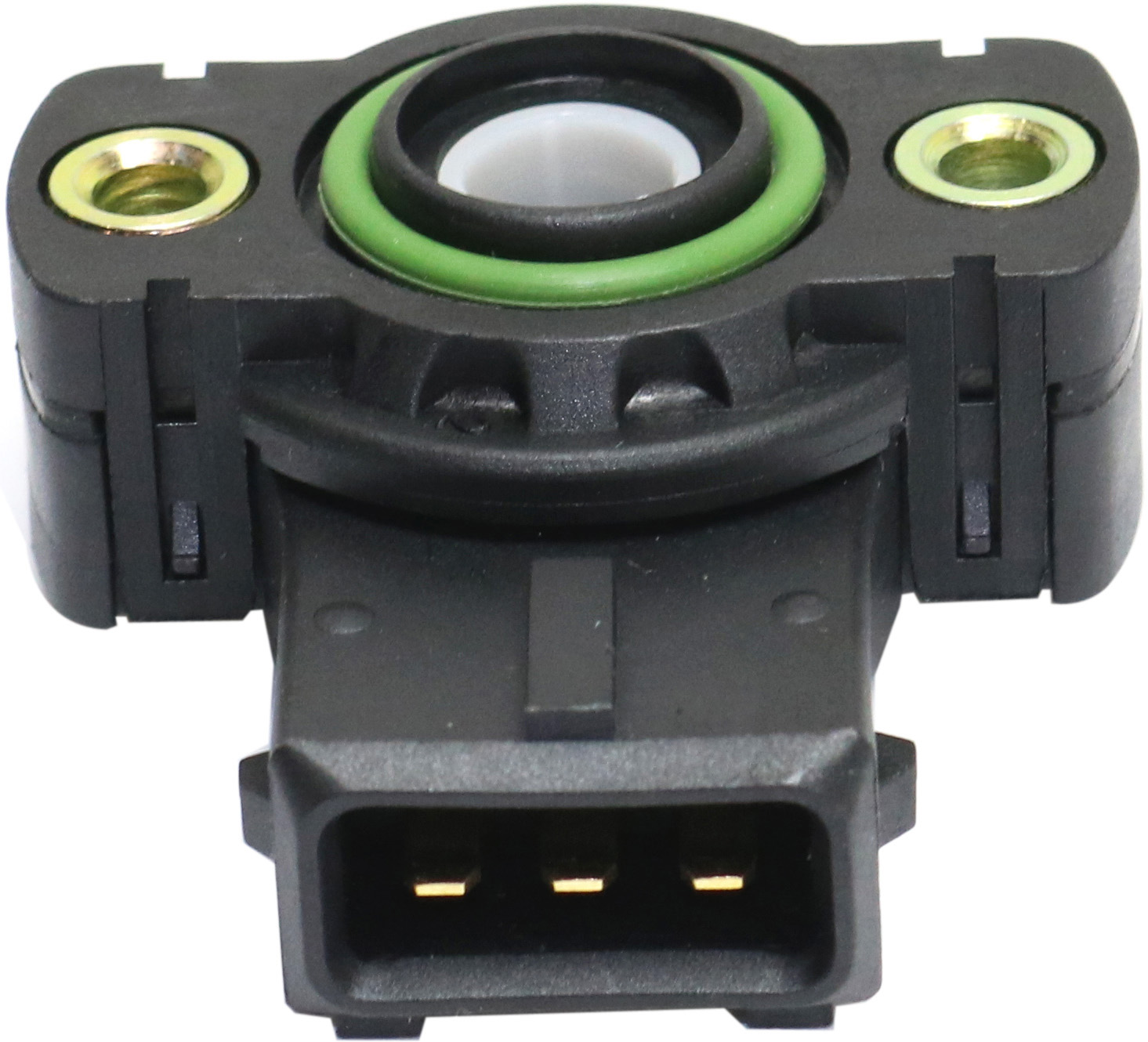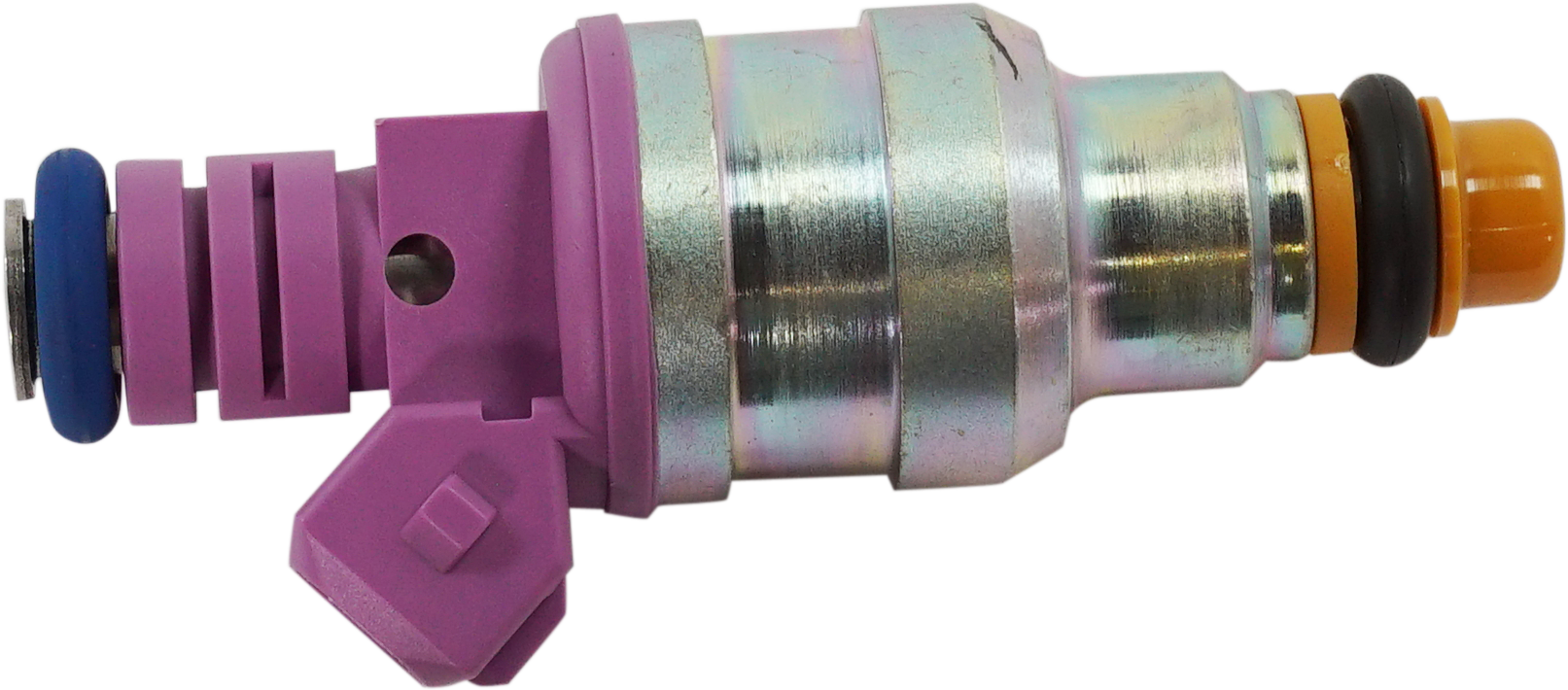When you pop the hood on a car from the late 80s or early 90s, you might be fooled into thinking the engine has a carburetor when it actually has throttle body injection (TBI). TBI is a type of fuel injection system that served as a segue between carburation and multiport fuel injection (MPI).
Although TBI was phased out of production cars by the mid-90s, many vehicles that employ the technology are still on the road. There are also TBI fuel injection conversion kits available for many older, carburetor-equipped cars.
What is Throttle Body Injection?
TBI is a type of fuel injection system that has one or two fuel injectors mounted in a throttle body. The injectors deliver fuel into the air above the throttle plates. From there, the air-fuel mixture enters the intake manifold, where it is distributed to the engine’s individual cylinders.

A typical TBI assembly has a fuel metering body that sits on top of the throttle body.
- The throttle body portion of the assembly contains the throttle plates, idle air control valve, and throttle position sensor.
- The fuel body houses the fuel pressure regulator and one or two fuel injectors.
The vehicle’s fuel pump moves fuel from the gas tank to the throttle body assembly. Then a computer, often referred to as the powertrain control module (PCM), activates the TBI injectors. The injectors spray fuel into the throttle body bore, right above the throttle plates. To control fuel pressure, the fuel pressure regulator routes excess fuel back to the fuel tank.

During the late 80s and early 90s, TBI systems were used in a variety of different production vehicles. Some of the most well-known applications are the V6 and V8 engines found in General Motors (GM) pickups.
The video below shows a TBI system running in a GM truck:
What’s the Difference Between Throttle Body Fuel Injection, Multiport Fuel Injection, and Direct Fuel Injection?
There are three primary types of fuel injection systems found on gasoline engines. These include throttle body injection (TBI), multiport injection (MPI), and gasoline direct injection (GDI).
Throttle Body Injection (TBI)
TBI, which is basically one step up from a carburetor, is found on older vehicles. As was mentioned, the setup uses one or two throttle body-mounted injectors to spray fuel into the intake manifold. Of the three primary types of fuel injection systems, TBI is the most primitive and the least efficient.
Multiport Injection (MPI)
With MPI, there’s an individual fuel injector for each of the engine’s cylinders. Each injector sprays fuel into the intake manifold or intake port, directly above the cylinder’s intake valve (s).
Although some older vehicles (e.g., the 1957 Chevy Corvette) had MPI, the technology didn’t become commonplace until the early 90s. Some older MPI systems were purely mechanical. There were also some setups that fired the injectors in groups.
But all modern MPI systems use electronically-operated injectors that are fired sequentially (one at a time). The PCM determines when to fire the injectors based on information from a variety of sensors.
Gasoline Direct Injection (GDI)
Even though MPI is far more efficient than TBI, it’s not as efficient as the latest form of fuel injection—GDI.
Like MPI, GDI uses one fuel injector per cylinder. The difference is that, in a GDI system, the fuel injectors spray fuel directly into the engine’s combustion chambers. Also, GDI systems operate at a much higher fuel pressure than the other two types of systems.
It’s also important to note that some modern engines have both MPI and GDI fuel injection. There is one of each type of injector per cylinder.

Adding Throttle Body Fuel Injection To a Vintage Vehicle
Fuel injection conversion kits—that update an engine’s fuel system from a carburetor to fuel injection—are available for a variety of makes and models. Usually, these conversion kits employ TBI injection.
Switching from a carburetor to an EFI throttle body improves driveability and fuel economy for a better driving experience overall.
Where To Get a New TBI Assembly That Fits Your Car
TBI might not be the most efficient out of the three primary types of fuel injection systems, but it’s still better than a carburetor. If you’re interested in upgrading your vintage car’s carburetor to a TBI, then you’ll need a fuel injection conversion kit. Luckily, getting one has never been easier with CarParts.com.
CarParts.com offers a wide selection of throttle bodies and fuel injectors that are sourced from only the most trusted manufacturers in the industry, so you can rest assured you’re only getting high-quality parts. You can also easily browse through our catalog by using our search filters and vehicle selector. Just enter your vehicle’s year, make, and model.
Don’t be afraid to take your vehicle to the next level. Check out our wide selection of throttle bodies, fuel injectors, and more at CarParts.com today.
Products Mentioned in this Guide
Shop this Project



Any information provided on this Website is for informational purposes only and is not intended to replace consultation with a professional mechanic. The accuracy and timeliness of the information may change from the time of publication.


 Throttle Body
Throttle Body
 Fuel Injector
Fuel Injector




















